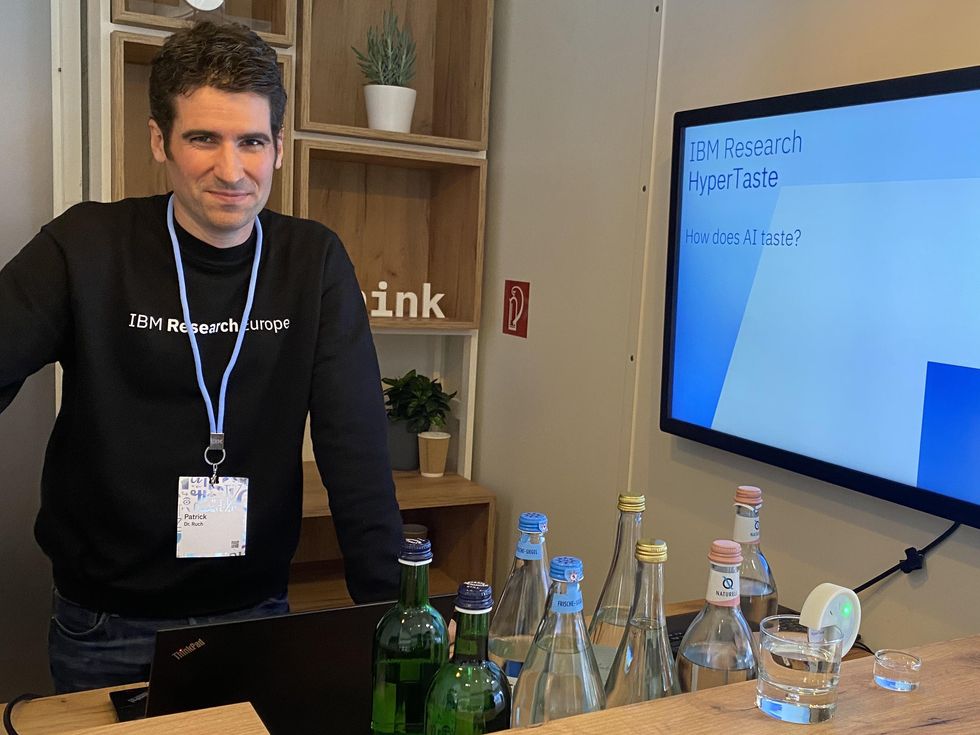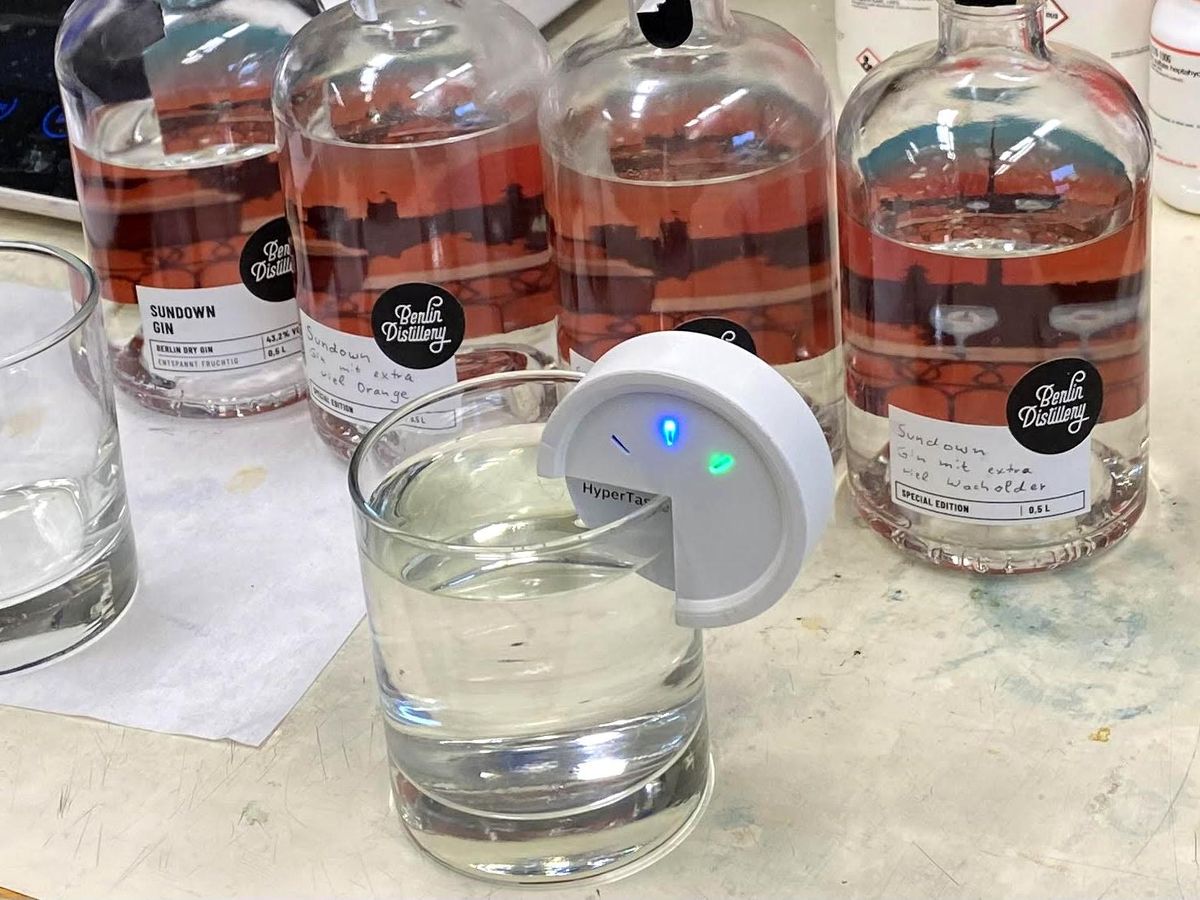Is it possible to give computers a sense of taste? This was the question that motivated researchers at IBM Research to develop HyperTaste, a tool for chemical taste sensing. It acts as an “electronic tongue”—a sensor that analyzes the chemical composition of liquids.
“HyperTaste was inspired by advances in AI and machine learning to mimic human senses like sight and hearing for recognizing images and interpreting speech,” says Patrick Ruch, a research staff member at IBM Research and coauthor of the paper on HyperTaste. “We wanted to present a new lens for chemical sensing.”
The idea was to apply a combinatorial approach using an array of sensors—much like the thousands of taste buds on our tongues—and then employ machine-learning algorithms to interpret the output of those sensors. The team used a printed circuit board with microcontroller-based hardware and an assembly of 16 conductive polymeric sensors that change their voltage when dipped in a solution. “It’s a bit similar to how a battery works, and it’s almost as if we’re using the liquid we want to test as an electrolyte,” Ruch says.
Dipping the array of sensors into a liquid generates a series of voltage signals unique to that liquid—its chemical fingerprint. These voltage signals are relayed to a mobile app, which transmits them to a cloud server, where a machine-learning model uses the data to train the algorithm and compare the fingerprint to a database of known liquids. The algorithm then reports the results—whether that’s identifying a liquid or just estimating its properties—back to the app within a minute or two.
“You don’t necessarily require a lab to do this, saving on both time and cost and accelerating the testing process,” says Ruch. “We wanted to use minimalistic, portable hardware and demonstrate that the intelligence of such a chemical sensing system could be pushed to the software side.”
Despite its operational simplicity, HyperTaste was not easy to develop. Bringing the various parts of the system together as well as merging an interdisciplinary team consisting of electrochemists and material scientists to determine HyperTaste’s sensing principle, electrical engineers to define and assemble the hardware, and software engineers for the data science and deployment side proved challenging.
“We had to integrate all these capabilities in the team and also find a common language to be able to understand the interfaces between these different components and the handoff points,” Ruch says.

Unlike most conventional chemical sensors such as pH and oxygen sensors, HyperTaste isn’t designed to detect a specific type of compound. “If you want a precise quantification of a particular compound, molecule, or toxin, HyperTaste might not be the best tool to use,” says Ruch. “You may need to choose a different sensing mechanism—one that’s a bit more sensitive and has a lower limit of detection.”
HyperTaste was first developed in 2019, but it was able to work only with a few specific liquids. Now, it can analyze much more complex liquids. “In the early days of the project, we had to manually dip the array of sensors several times into different liquids to collect our training data,” Ruch says. “Eventually, we moved to a robotic autosampler unit with the sensors mounted on it. The autosampler can work by itself 24/7 to dip the sensor into different liquids.”
The team at IBM has tested HyperTaste’s ability to distinguish different types of bottled mineral water, identify fruit juices by fruit type and wines by brand and origin, estimate the intensity of coffee, and detect counterfeit alcohol. Ruch classifies the possible use cases for HyperTaste into four buckets: authentication to validate the source of liquids and weed out fake products; quality control to ensure consistent beverage quality; innovation to test and develop new flavors and formulations; and monitoring.
Monitoring, for example, has already been tested by putting HyperTaste units on the hull of the autonomous ship Mayflower, which has just completed its voyage across the Atlantic. “The idea was to show that HyperTaste could autonomously monitor ocean chemistry along time and the route of travel to be able to make statements about things like ocean acidification,” says Ruch. “Some engineering had to be done to make sure the seawater could be pumped up from the ocean to be sampled on board, but the good news is that the system remained operational throughout the journey. We’re looking forward to dissecting the data once we have it.”
Research on HyperTaste is part of IBM’s larger initiative to accelerate material discovery and development. “This kind of machine-assisted interpretation of measurement data could be useful for the lab of the future, and there’s a lot of potential to use machine learning in lab analytics,” Ruch says. “If a machine can help interpret measurements, then you can find out how to automatically synthesize compounds and instruct robotic labs to produce those compounds. You can generate new hypotheses about novel types of materials that could have better properties or be made from more sustainable substances. Accelerating the process of interpreting data can help automate the cycle of innovation.”
- Robotic Chameleon Tongue Snatches Nearby Objects in the Blink of ... ›
- Loser: Tongue Vision - IEEE Spectrum ›
- Treating Tinnitus Through the…Tongue? - IEEE Spectrum ›
Rina Diane Caballar is a writer covering tech and its intersections with science, society, and the environment. An IEEE Spectrum Contributing Editor, she's a former software engineer based in Wellington, New Zealand.



